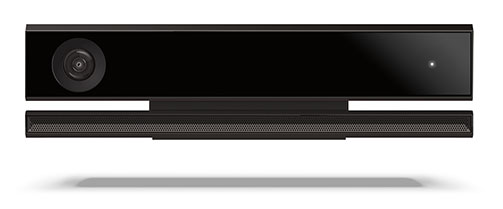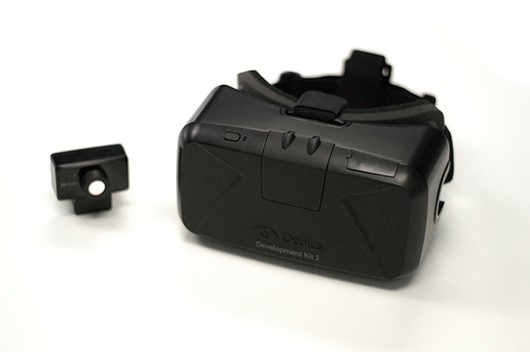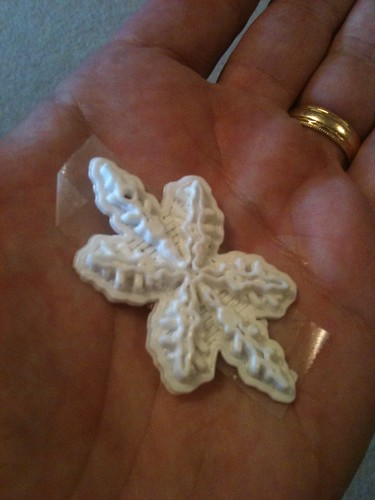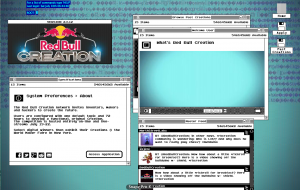The next few months is going to see an interest second wave of technology that I am very interested in.
The first is the Windows version of Kinect 2.0. This is the consumer packaged full body sensor that uses the same base as with the Xbox One. The original Kinect from the Xbox 360 was just a USB device so had the maker and hacker community exploring how it use it on regular machines before the official Windows development version arrived. When the Xbox One launched it’s Kinect 2.0 cmd with a completely different plug, making it impractical to explore. The Xbox One was slated to be a development machine for all (consoles at the moment have specific machine models for developers and a different one for consumers). This development kit has not been forthcoming (it may or may not turn up later). All this means I could not continue the work I wanted to do with the kinect for Choi Kwang Do.

The new Kinect sensor stye body better and in particular shoulders, and also weight transfer. So I have had to pre-order a Kinect 2.0 for Windows. It is due in September. I am hoping it will all work with Unity3d again!
I have applied to id@xbox the developer scheme but a one person company working on a non game related piece of work on the fringes of the games industry probably didn’t flag up as a priority 🙂
Talking of Unity3d, it’s 4.6 patch is rapidly approaching. This upgrade will feature the much needed GUI changes. I love Unity3d development but anything with buttons or sliders and GUI layouts is so incredibly awkward it is hard to see how we get anything working. The new GUI system is going to treat GUI objects just like any other object. They will appear on the scene during development. At the moment GUI objects only show up when you run, making getting things lined up and working a bit of a black art. This also sets us up for Unity3d 5.0 a major new release. Lets just hope all my code still works !
The third big piece of kit is the Oculus Rift DK2 (Development Kit 2).

Now owned by Facebook but still approaching construction in the same way the original Kickstarter did. This is really exciting as the first Oculus Rift was and is still a liberating experience. With DK2 the resolution of the screens is much higher now a 960×1080 per eye. It also comes with an additional relative position sensor. One that can, like Kinect, see where the headset is in the space in front of it. It is fully supported by a Unity3d library too (as with the previous version) It is not the only VR headset heading to the market but it is the one you can get your hands and eyes on.
makers
Dear BBC I am a programmer and a presenter let me help
I was very pleased to see that the Tony Hall the new DG of the BBC wants to get the nation coding. He plans to “bring coding into every home, business and school in the UK”. http://www.bbc.co.uk/news/technology-24446046
So I thought, as I am lacking a full time agent in the TV world, I should throw my virtual hat in the ring to offer to work on the new programme that the BBC has planned for 2015.
It is not the first time I have offered assistance to such an endeavour, but this is the most public affirmation of it happening.
So why me? Well I am a programmer and have been since the early days of the shows on TV back in zx81/c64/bbc model a/b/spectrum days. I was initially self taught through listings in magazine and general tinkering before studying to a degree level, and then pursuing what has been a very varied career generally involving new tech each step of the way.
I was lucky enough to get a TV break with Archie Productions and the ITV/CITV show The Cool Stuff Collective, well documented on this blog 😉 In that I had an emerging technology strand of my own. The producers and I worked together to craft the slot, but most of it was driven by things that I spend my time sharing with C-level executives and at conferences about the changing world and maker culture.
It was interesting getting the open source arduino, along with some code on screen in just a few short minutes. It became obvious there was a lot more that could be done to help people learn to code. Of course these days we have many more ways to interact too. We do not have to just stick to watching what is on screen, that acts as a hub for the experience. Code, graphics, art work, running programs etc can all be shared across the web and social media. User participation, live and in synch with on-demand can be very influential. Collections of ever improving assets can be made available then examples of how to combine them put on TV.
We can do so much with open source virtual worlds, powerful accessible tools like Unity 3d and of course platforms like the Raspberry Pi. We can also have a chance to explore the creativity and technical challenges of user generated content in games. Next gen equipment like the Oculus rift. Extensions to the physical world with 3d printers, augmented reality and increasingly blended reality offer scope for innovation and invention by the next generation of technical experts and artists. Coding and programming is just the start.
I would love to help, it is such an important a worthy cause for public engagement.
Here is a showreel of some of the work.
There is more here and some writing and conference lists here
So if you happen to read this and need some help on the show get in touch. If you are an agent and want to help get this sort of thing going then get in touch. If you know someone who knows someone then pass this on.
This blog is my CV, though I do have a traditional few pages if anyone needs it.
Feeding Edge, taking a bite out of technology so you don’t have to.
Yours Ian Hughes/epredator
Working the Cloud – Launch Party
I was pleased to get a chance to head to London last Friday for the launch of Kate Russell’s new book Working the Cloud. Amazingly this is Kate’s first book which given how often she has provided interesting tech news on the TV on shows like BBC Click is pretty amazing. Mind you, I have not written a book yet either 😉
So yes I was at the launch party along with other media people and fellow tweeters, but I wouldn’t write about something unless I thought it had something going for it. This book and its supporting material certainly does.
So what is the book all about ? Well it is a fantastic curated collection of useful tools to help anyone who has not yet fully realised the power of the web in getting things done. Starting a business, communicating with customers, creating interesting content etc. it is all covered.
It is not merely a collection of URL’s as each is explained as to the benefits of a particular tool or web application. Each section also has more than one alternative and is also peppered with tips. This is because Kate is writing about things she has used, is using and in some cases maybe stopped using for a better alternative.
This is really an expression of Maker culture, but for the more apparent mainstream ability to just get on with things. Too often people want to read lots of instructions for each application, making decisions as if there was not way to change afterwards. I think the book points to a spirit of doing. There are a stack of tools out there, they are accessible, often free or very cheap and there is no excuse for not using them.
To prove the point that there is more than one way to uv unwrap a feline polygon model Kate has done more than just publish a book. There is the ongoing companion website http://workingthecloud.biz/ and apps for mobile devices too.
The cover of the book itself is an augmented reality trigger for Aurasma’s app too. Something worth having a look (and listen to) if you see a physical copy of the book in a shop. The intro (without sound on) can raise a few eyebrows someone is looking over your shoulder 😉

Kate also did a virtual book signing. Oddly I missed this as I was in a Choi Kwang Do class at the time. However it was a transmedia gig using Google Hangout
There were some tweets with @andypiper about the other first virtual book launch back in 2006 in Second Life. Which I remember very well 🙂

This is of course a different sort of event 🙂 So we are not going to take Kate’s first away from her 😉 Though the next edition of the book must have some 3d virtual world communication in it. Who knows maybe I can guest write that 🙂
I am looking forward to Kate’s next book which she crowdsourced the funding for on Kickstarter to write some science fiction for the new Elite Game which again proves that she is doing all the things in the book not just writing about them.
A white christmas, unique 3d printed snowflake from Medaler.com
I just had a great christmas letter through which seemed a fitting way to blog about this time of year and also cool ideas and technology mixing with art. It was a package from Jim “babbage” Purbrick (@JimPurbrick) and it contained this very intriguing, and ornate 3d printed snowflake pendant/medal/badge.

It was, to quote the letter a unique creation. “It was seeded with your name, address and public data about you from the Internet, grown in a computer simulation and printed out on a 3D printer at Build Brighton”.
Wow! What a wonderful way to commemorate christmas and who we all are individually online right now. We are still unique yet part of a digital snow storm of shared ideas.
If you want to know more head on over to Medaler.com to see a little about this project and sign up for more information. These medals are physical achievement logs of digital activity. Wow! I love tech!!! 🙂
Merry Christmas and happy holidays FTW to everyone from all of us (I mean me) at Feeding Edge Ltd 🙂
Yay! Flush the Fashion 3d print article published
Issue 3 of the full Flush the Fashion magazine has just gone live, complete with my multiple page spread on 3D printing 🙂 It starts on page 107 (but obviously read the rest of the excellent mag too.
It is awesome to see professional the job done on the text I wrote and some of the pictures I provided, but added with a whole lot more.
Makie’s are in there, Second Life Reebok trainers, Minecraft printing and the TVRRUG reprap as seen on The Cool Stuff Collective and a Raspberry Pi case.
Two articles into this does that make me a journalist officially now 🙂
You can view it online with the viewer above or download it here as a PDF and there is a regular weblink too.
***Update there is also the newstand ipad version which looks brilliant too, flush magazine if you search on the app store 🙂
So virtual worlds last issue, 3d printing this issue whats next? I have a cunning plan.
The future of Maker Culture – Redbull style
It seems Redbull manage to spot and engage with movements pretty quickly. They obviously sponsor a lot of mainstream sport, and also lots of the cooler extreme sports but they are also promoting maker culture, even themeing an Arduino called the Bullduino which forms the basis of the competition to make something interesting. This is a drinks company engaging in the future and on the cutting edge of what is happening in society.
The competition running out of the US is called RedBull Creation and even its home page has an interest twist with an very homebrew look to the windows it shows.

I think this points out that a lot more people are taking notice of maker culture in ways that are much more mainstream than anyone would have thought. It is a wave and one that collects up all the interesting technologies and social changes. Hardware and software creation and engineering, gaming, virtual world and 3d design and of course rapid fabrication with 3d printers.
It is maker culture that needs to be nurtured in schools now that ICT has been scrapped. This is because it encourages the STEM subjects and the new engineers but also blends that with other creative forces and ideas. Rather than split things into one subject or another, one hobby or another the generalist concept of Maker culture fits much better. It is filled with a can do, can hack attitude that is going to be really refreshing to see it develop.
Making from anything – MaKey MaKey
It looks like this kickstarter project has raised loads of money.
It aims to make it easy to create interfaces from everyday objects and help anyone instrument the world, just by clipping with alligator clips.
It is called MaKey MaKey which is a great play on words and deserves funding just for that.
The video shows the potential of it really well
Of course this is not strictly speaking some little back room project these are MIT media lab students who live and breathe this stuff. When I was at university we never had anything as forward thinking as MIT courses. I can imagine the horror of our lecturers, “you are going to connect people up to bananas and make noises!”. Back then we were radical because we chose to program in C not Modula-2 for one of our team projects 🙂
